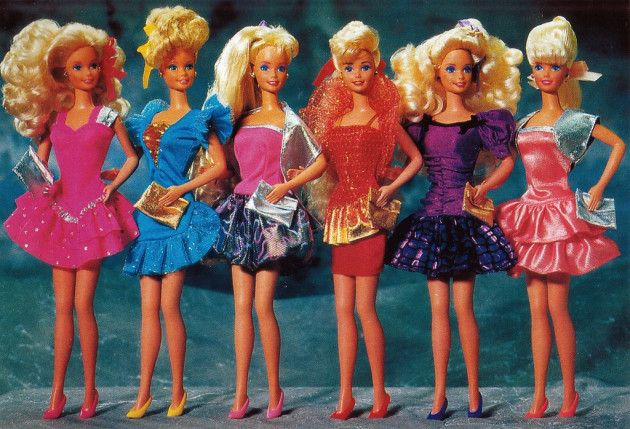The Lilith Blog 1 of 2
April 8, 2019 by Yona Zeldis McDonough
A (Feminist) Defense of Barbie as She Turns 60
Barbie has just turned 60, a long lifespan for a toy. But then Barbie has always been more than a toy—much more. She was the brainchild of Ruth Handler, a savvy, stubborn Jewish businessman woman (her husband Elliot was the second half of Mattel) who got the idea watching her daughter Barbara play with paper dolls. These dolls were women, and integral to their charm was the fact that they came with numerous outfits and could be endlessly redressed. Handler envisioned a plastic, 3-D version of the doll, which would have represented a significant departure from the baby-and-little-girl dolls of the period. 
When she was finally able to produce a prototype that satisfied her, the toy buyers to whom she presented it (almost all men) were unimpressed. Handler was told that the doll would never succeed, that little girls wanted to be mommies. “No, little girls want to be women,” she snapped. And Handler believed Barbie could offer a concrete blueprint as to how. Barbie made her debut at New York’s toy fair in 1959; within eight months of her introduction, the doll had flown off the shelves—and the rest is history.
A visit to the Mattel-sponsored Barbie website is illuminating. Scroll down to see a picture of a smiling Ruth Handler on the left, while on the right is a partial view of the original 1959 Barbie doll, her expression a bit more covert and harder to read—and for good reason. Barbie’s always been a shape-shifter, moving from roles serious to frivolous and back with enviable ease. Just when you think you know who she is, poof, she morphs into something—someone—completely different.
Barbie’s earliest careers, which she slipped in and out of as easily as her many outfits, were nurse, fashion editor, flight attendant and executive career gal. By 1962, she had her own house and her own car; by 1965, she was an astronaut, as if the limits of earth could no longer contain her. 1971 saw the introduction of the ultimate beach girl, Malibu Barbie, but two years later, she was back as a surgeon and olympic gold medalist. She went on to become a CEO, the subject of a painting by Andy Warhol, a rock star, a pilot, a paleontologist, an army officer, head chef, film director and presidential candidate. Her body has been refashioned; she’s learned sign language. Is there anything she can’t be or do?
Six decades on the scene would suggest that the answer is no—Barbie breaks the boundaries and shatters the ceilings, all the while never losing her trademark smile or mussing her luxurious mane of hair.
Back in the 1970s, feminists decried her—and in the 1990s, she suffered another biting backlash, when she was accused of imposing an unachievable, unreal body image on little girls. I think this underestimates children.
Even at six, when wielding my very first Barbie (bubble cut, a la Jackie K) I knew that she was a doll and that neither I nor any other woman was supposed to look like her. There were and are many pernicious images in the culture that sow discontent, envy and shame in girls—but please, let’s not mistake Barbie for one of them.
Instead, she’s weathered her ups and downs, triumphs and missteps (anyone remember the “Math class is hard!” debacle?) with her characteristic aplomb. She’s a survivor, that’s what she is, and with any luck, she’ll hang on just a little bit longer. I’ll be rooting for her—and hope you will too.
The views and opinions expressed in this article are the author’s own and do not necessarily reflect those of Lilith Magazine.
 Please wait...
Please wait...
